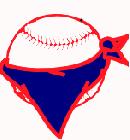
In the middle of the season (as every pitcher's ability is being tested), the below comments came across my computer.
What do you think?
Everyone is looking for a magic pill to keep young pitchers from hurting their arm. The current voodoo answer is “pitch counts” and “don’t throw the curveball.” Well, Dun S, Loftice J, Fleisig GS, Kingsley D, and Andrews JR. of the American Sports Medicine Institute, Birmingham, Alabama have done a study that puts that myth to bed.
A Biomechanical Comparison of Youth Baseball Pitches: Is the Curveball Potentially Harmful?
BACKGROUND: The curveball has been anecdotally considered as a dangerous pitch among youth pitchers, especially for their ulnar collateral ligaments. No biomechanical studies have been conducted among youth pitchers comparing different types of pitches. HYPOTHESIS: The kinetics of the baseball throw varies significantly between the fastball, curveball, and change-up for youth pitchers. Kinematic and temporal differences are also expected. STUDY DESIGN: Controlled laboratory study. METHODS: Twenty-nine youth baseball pitchers (age, 12.5 +/- 1.7 years) pitched 5 fastballs, 5 curveballs, and 5 change-ups with maximum effort in an indoor laboratory setting. Data were collected with a 3-dimensional motion analysis system. Kinetic, kinematic, and temporal parameters were compared among the 3 pitches. RESULTS: For elbow varus torque, shoulder internal rotation torque, elbow proximal force, and shoulder proximal force, the fastball produced the greatest values, followed by the curveball and then the change-up. The fastball also produced the greatest elbow flexion torque. Shoulder horizontal adduction torque and shoulder adduction torque were the least for the change-up. Several differences in body segment position, velocity, and timing were also found. CONCLUSIONS: In general, elbow and shoulder loads were the greatest in the fastball and least in the change-up. Kinematic and temporal differences were also found among the 3 pitch types. CLINICAL RELEVANCE: The curveball may not be more potentially harmful than the fastball for youth pitchers. This finding is consistent with recent epidemiologic research indicating that amount of pitching is a stronger risk factor than type of pitches thrown.Now how about pitch count? Some people think that if a young pitcher throws less than a certain number of pitches in a game he is safe. Let’s say he is limited to 50 pitches. But then he throws 50 on Tuesday, pitches for an hour with his private instructor Wednesday, throws 50 on Thursday, 50 on Saturday and sucks it up on Sunday to help win the tournament championship and his arm hurts. How can that be (he doesn’t throw a curve and is only allowed to throw 50 pitches)?
A SEC pitching coach has come up with an interesting formula to protect pitchers’ arms. Multiply the pitcher’s age by 100. That is the maximum number of pitches a pitcher should throw in a year. So if he is 12, he can only throw a maximum of 1200 pitches in a year. He can throw 80 pitches a game if he doesn’t tire, but let him rest for a week between starts. He can pitch 15 times in a year. He can throw curveballs. His arm should be fine. Having said that, understand that throwing overhand is an unnatural motion for the human body. It places strains on the arm and shoulder and stuff can happen. But if you follow that formula, you will minimize the risk.



